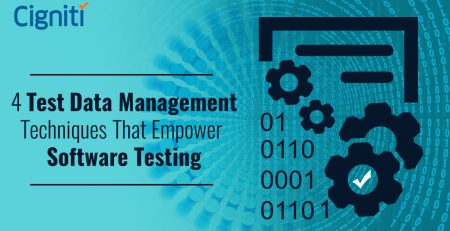Li-Fi Testing Yields High Internet Speeds In Real-Time
|
Listen on the go!
|
If you are happy and satisfied with your Wi-Fi speed, then you will be jumping crazy when you know about Li-Fi, the newly tested wireless communication which can increase bandwidth by 100 times. Li-Fi recently managed to achieve 1Gbps real-world results during testing. That’s not all. It boasts of a theoretical top speed of 224 Gbps which means you can download 28 1GB movies in one second. Take some time to let it sink in.
What Is LiFi?
A visible light communication (VLC) system, Light Fidelity or Li-Fi is runs with wireless communications, and uses light to switch on and off LEDs, that result in the transferring of data at a considerably higher speed. Professor Harald Haas at University of Edinburgh coined the term “Li-Fi”, during his TED Talk in the year 2011. He intended light bulbs that could act as wireless routers and proven on stage that a single LED bulb can transmit far more data than a cellular tower. In 2012 after four years of research, Haas set up company pure Li-Fi with the aim ‘to be the world leader in Visible Light Communications technology’.
How LiFi Works:
Li-Fi and Wi-Fi are similar, as both of them transmit data electromagnetically. While Wi-Fi run on radio waves, Li-Fi uses visible light. Li-Fi is a VLC system, and it accommodates a photo-detector in order to receive light signals and a signal processing element, to convert and enable the streaming of the content. An LED lightbulb is a semi-conductor light source; this essentially means that the constant current of electricity supplied to an LED lightbulb can be dipped and dimmed, up and down at extremely high speeds, without being visible to the human eye. The miniscule variations in the rapid dimming of LED bulbs is then converted by the ‘receiver’ into electrical signal. The signal is then converted back into a binary data stream that we would recognize as web, video and audio applications that run on internet enables devices.
LI-FI Vs WI-FI
The below table should aptly describe the basic difference between Li-Fi and Wi-Fi
| Parameter | Li-Fi | Wi-Fi |
| Speed | Very fast transfer speeds (>1Gbps) | 150 Mbps |
| Transfer Medium | LED lightbulbs | Radio waves |
| Spectrum Range | Visible light spectrum has 10,000 times more spectrum when compared with Radio frequency spectrum | Radio frequency spectrum is very scarce when compared with Visible light spectrum |
| Operating Frequency | 100 Terra Hz | 2.4 GHz, 4.9 GHz, 5 GHz |
| Cost | Much cheaper than Wi-Fi as free band does not need license and it used light to transfer data | Very expensive as radio frequencies are scarce, licensed and very costly |
| Privacy | Light is blocked by walls and hence more secure data transfers | RF signals cannot be blocked by walls and hence need to employ techniques for secure data transfers |
| Ecological impact | Low as it is based on LEDs and no harmful radiations | Medium impact as it uses harmful radiations |
| Applications | Can be used in airlines, undersea explorations, hospitals, offices and homes for internet usage | Used for internet usage with the help of Wi-Fi kiosks or hotspots |
How Li-Fi Can Change Our Lives
- No harmful radiations
- Prevents piggybacking
- Much higher speeds than Wi-Fi
- Unconstrained by radio interference
- Very cost affective as it is powered by LEDS
- 10,000 times the frequency spectrum of radio
- Eliminates neighboring network interference
- More secure because data cannot be intercepted without a clear line of sight
- Green technology as it is based on LEDs and the infrastructure is in place already
Factors That Affect Li-Fi
Visible light cannot travel through walls. Though it is a security benefit, the fact remains that the Wi-Fi network can do something that Li-Fi cannot that is work in multiple rooms, even if there’s a wall between them. Also, the lights also need to remain on all the time, a necessity that may not be an issue for offices or retail establishments, but would be problematic in domestic settings. A solution to dim the lights as per need is suggested but it remains to be seen how that will impact the data transfer speeds.
How Cigniti Can Play a Role
Cigniti Technologies sees this idea as revolutionary and is closely monitoring the technical and market changes Li-Fi is going through. Cigniti is also researching the next generation of smart LED bulbs, Jugnu that can transfer data through visible light. Cigniti plans to foray into the Li-Fi zone as soon as anything on Li-Fi comes to beta testing or is commercially available. This would allow us to perform testing at very high net speeds thereby providing more coverage to the clients in terms of latency, ping values and throughput.
[Tweet “At @Cigniti we are researching on the next-gen of smart #LED bulbs #Jugnu that can transfer data through visible light. #IoT #LiFi”]
In Conclusion
Li-Fi sounds great from the start, but don’t throw your Wi-Fi routers just yet. Li-Fi technology isn’t meant to replace Wi-Fi – it’s meant to work alongside it. Li-Fi doesn’t work outside, so public Wi-Fi hotspots would still need to be used!





Comment (1)
Thanks for sharing. Btw, Have you heard about Binfer? It is an easy way to transfer big data.